#Orlaya grandiflora
Explore tagged Tumblr posts
Text




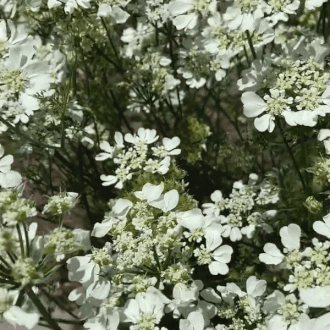

the white lace flower (orlaya grandiflora) | source
#stim#flowers#bees#nature#sfw#white#green#brown#plants#the white lace flower#orlaya grandiflora#animals#insects#bugs#ishy gifs#postish
302 notes
·
View notes
Text

Orlaya grandiflora
66 notes
·
View notes
Photo
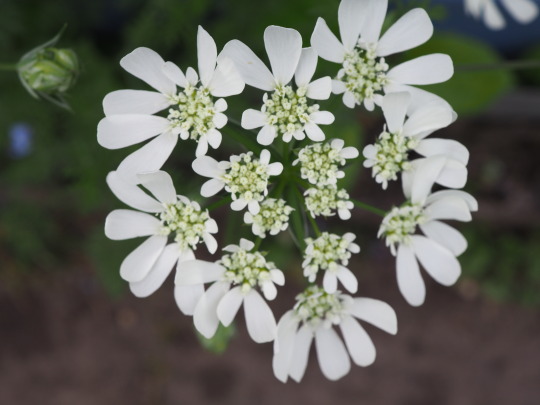
Bild des Tages: Strahlen-Breitsame
8 notes
·
View notes
Text






0 notes
Text
オルレア(オルラヤ)♪ Orlaya grandiflora.

みなさま素敵な華金を♪
#Orlaya grandiflora.#オルレア#オルラヤ#ホワイトレース#グランディフローラ#orlaya#grandiflora#花金#華金#街角のお花#街角の彩り#旬の花#四季の花#四季の彩#四季花#flowers#flowerphotography#nature#naturephotography
2 notes
·
View notes
Text

#chelsea flower show#Orlaya grandiflora in Jihae Hwang’s Korean garden#Photograpy by Eva Nemeth#Chelsea Flower Show 2023
1 note
·
View note
Text



Plant of the Day
Wednesday 3 July 2024
The two annuals Calendula officinalis 'Neon' (pot marigold) and Orlaya grandiflora (white laceflower) were creating a show in a bed adjacent to the wildflower meadow of Great Dixter, Sussex, providing an additional food source for pollinators.
Jill Raggett
#calendula#pot marigold#Orlaya#white laceflower#annuals#annual#plants#horticulture#gardens#garden#Great Dixter#pollinator friendly#orange flowers#white flowers
223 notes
·
View notes
Photo
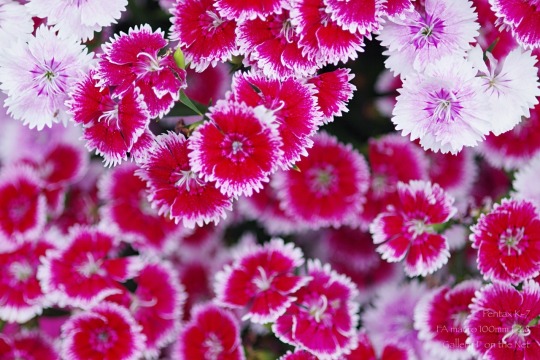

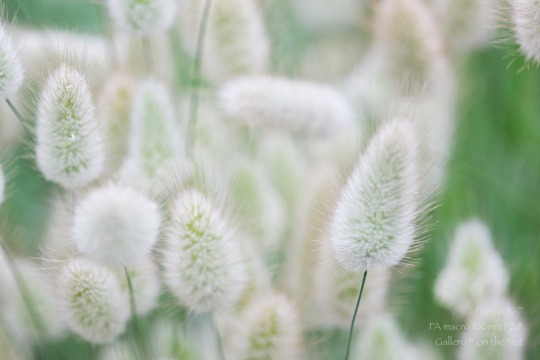
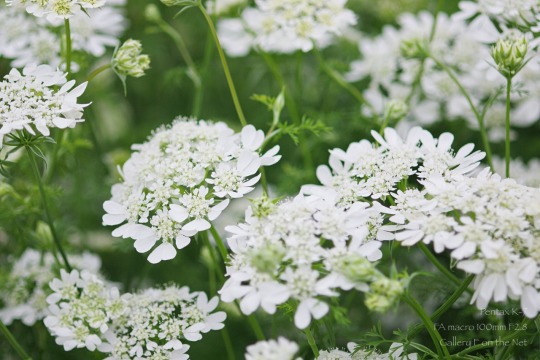
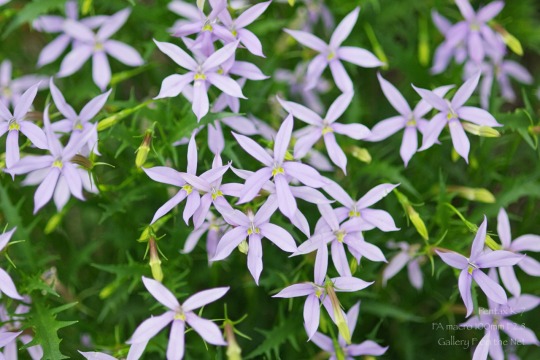
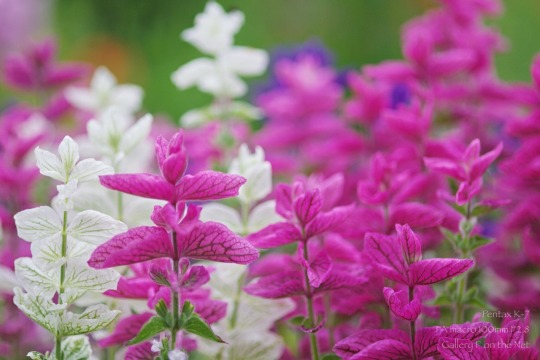
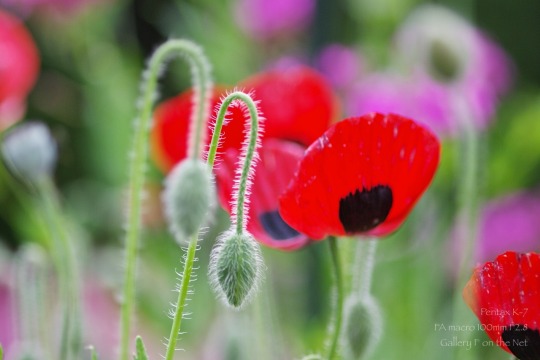
京都府立植物園 (Kyoto Botanical Garden) 2011
#Dianthus cv.Telstar#ダイアンサス#Antirrhinum majus cv.#キンギョソウ#Lagurus ovatus#ラグルス#Orlaya grandiflora#オルラヤ#Laurentia hybrida cv. avant-garde violet#ラウレンティア#Salvia horminum#Papaver commutatum#パパヴェル#ケシ#Pentax K-7#FA macro 100mm F2.8#kyoto#Kyoto Botanical Garden#flower#2011#May
2 notes
·
View notes
Photo

Orlaya Grandiflora (White Lace Flower)
#photographers on tumblr#nature#flowers#white#floralls#floral#summer#flores#verano#blanco#orlaya#lace flower#minoan lace#laceflower#french meadow parsley#orlaya grandiflora#vertical#original photographers
466 notes
·
View notes
Photo

25 notes
·
View notes
Text
21 au 27 mars 2022
I started sowing seeds this week, so I can plant them out in the autumn. The mornings were very cold so I spent the first hour or two sowing seeds in the glasshouse. Then I continued raking the soil for the new meadow. This was tough work. Couli and I just kept raking and clearing the biggest stones, cut roots and clumps of grass. We finished Tuesday. Tuesday afternoon I pulled a roller over the entire site, twice. Then I set up sprinklers around the area so they would be ready to go immediately after sowing.
Wednesday, late morning, I sowed the wildflower meadow. Here are the seeds before being mixed up and mixed with sand to help with a more even distribution.
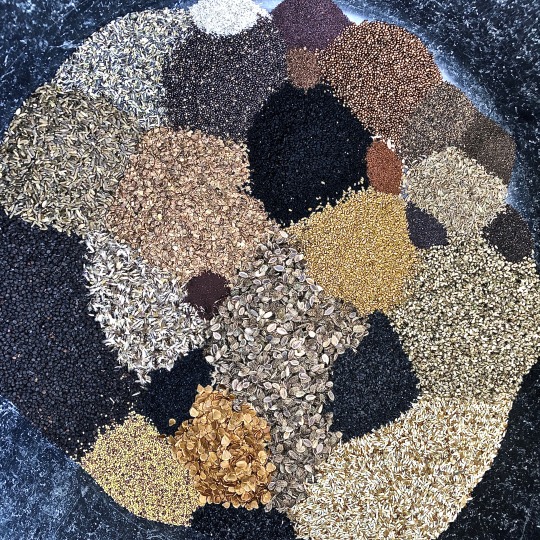
Here are the seeds all mixed together.
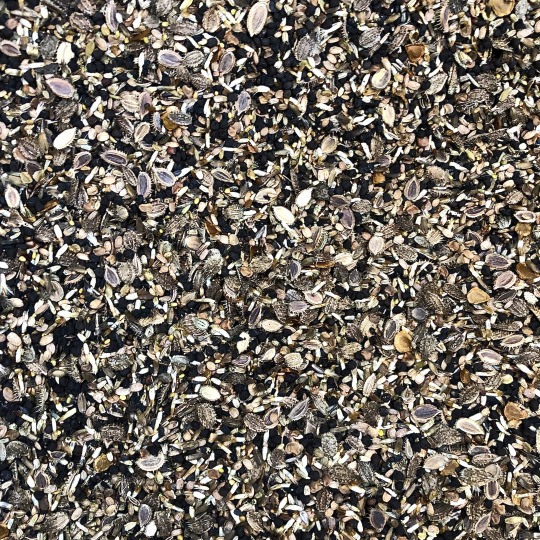
This is the mix:
Achillea millefolium
Agrostemma githago
Allium schoenoprasum
Allium vineale (syn. Allium sphaerocephalum)
Carum carvi
Clinopodium nepeta (syn. Calamintha nepeta)
Campanula persicifolia
Catananche caerulea
Centaurea cyanus 'Blaue Gefüllte'
Centaurea scabiosa
Centaurium erythraea
Dianthus carthusianorum
Galium verum
Knautia arvensis
Lilium martagon
Nigella sativa
Origanum vulgare
Orlaya grandiflora
Ornithopus sativus
Papaver rhoeas
Phacelia tanacetifolia
Pimpinella saxifraga
Rhinanthus minor
Salvia pratensis
Salvia sclarea
Scabiosa columbaria
Trifolium rubens ( or is it Trifolium alpestre ? Time will tell.)
Verbascum blattaria (syn. Verbascum blattaria f. albiflorum)
Couli will take care of irrigation while I’m on holiday. It is very frustrating that Michel delayed this entire project by over a week. I sent a strongly worded message regarding his bullying. Thankfully it is done and I can go away knowing it is in good hands with Couli. Things should take at least a week to germinate by which time I’ll be back.
Wednesday after work, I took the train to Ventimiglia. I couldn’t start my holiday soon enough. I started having problems using my credit card when I ordered my Uber, which I just found a bit strange and thought not much of it until it was refused in the evening when I tried to pay for my hotel room. The place I chose to stay was very close to the train station for my 06.40 train to Rome the next morning. Coincidently, the restaurant André and Denis recommended was adjacent and owned by the cousin of the person I rented my room. The food was delicious. It also seems to be a bit of a gay gathering spot; all the other people in the restaurant were male couples.
Before bed, I sent an email to my bank and was going to ring them while on the train Thursday. I woke up in the middle of the night worrying and discovered a way to send a message via the app. I received a phone call within an hour and we went through about a dozen fraudulent charges. I was shocked. My card had to be cancelled. I was now on holiday without my main credit card. Thankfully, Daniel, who I was visiting in Rome, lent me some money and I had brought my Monzo card, so I transferred money around so I could use it.
It was so nice to spend four days in Rome with Daniel. We’ve been friends since 1994.

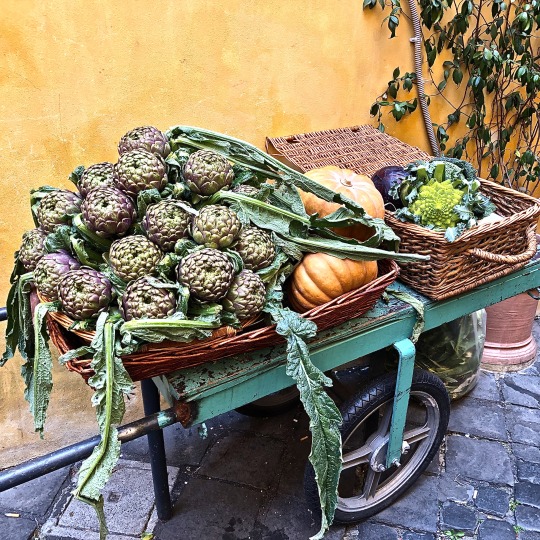
We ate very well and enjoyed just wandering around the quieter parts of Rome.
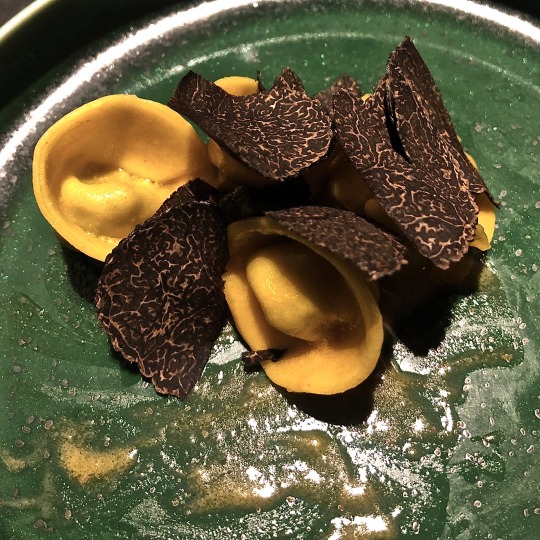
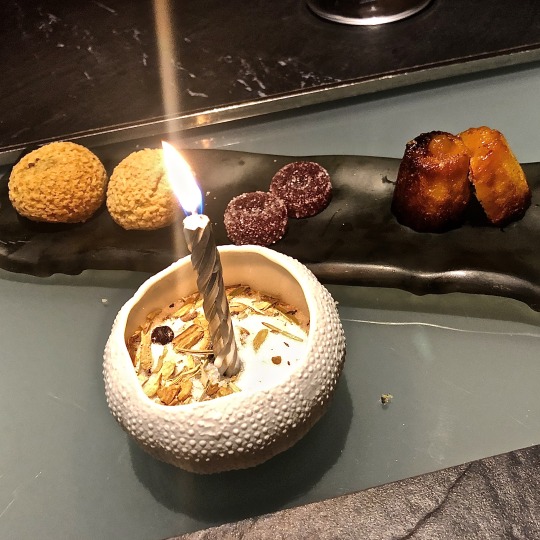
Plant of the week
Boraginaceae Phacelia tanacetifolia Benth.
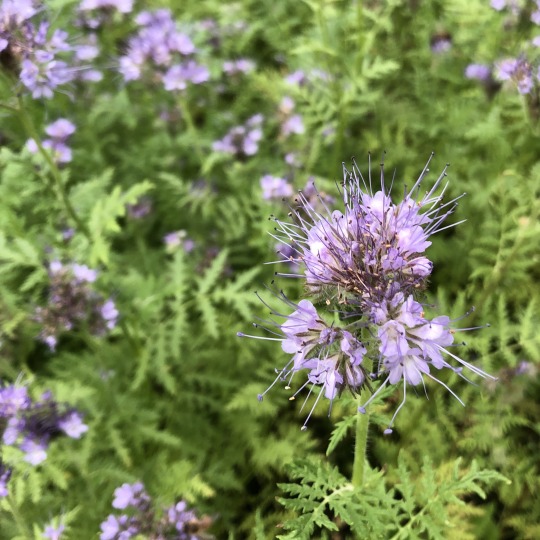
common name(s) - lacy phacelia, blue tansy, purple tansy, fiddleneck; français : phacélie à feuilles de tanaisie; Deutsch : Büschelblume synonym(s) - Phacelia commixta Greene; Phacelia tanacetifolia var. cinerea Brand; Phacelia tanacetifolia var. genuina Brand; Phacelia tanacetifolia var. pseudodistans Brand; Phacelia tanacetifolia f. staminea Brand; Phacelia tanacetifolia var. tenuifolia Torr.; Phacelia tanacetifolia subvar. tenuisecta Brand; Phacelia tripinnata Fisch., C.A.Mey. & Avé-Lall. conservation rating - none native to - California location - Domaine de l’Orangerie leaves - deciduous fern-like pinnately cut, sometimes rather grey-green; mostly divided into smaller leaflets which are deeply and intricately cut into toothed lobes, giving them a lacy appearance flowers - abundant, densely set soft blue or lavender-blue in terminal, curved cymes in summer; dense and hairy inflorescence is a one-sided curving or coiling cyme of bell-shaped flowers in shades of blue and lavender; just under a centimetre long and has protruding whiskery stamens fruit - seeds are "negatively photoblastic", or photodormant, and will only germinate in darkness habit - robust winter annual of variable height, 200mm to 1,200mm tall and 500mm wide habitat - most common in the deserts of southern California at elevations below 1,500m, but may be occasionally found at much higher elevations pests - generally pest-free disease - generally disease-free hardiness - to -10ºC (H4) soil - well-drained chalk, loam or sand sun - full sun propagation - seed; self-seeds freely pruning - none required nomenclature - Boraginaceae - borago - shaggy-coat, burra with feminine suffix (the leaves); Phacelia - from Greek meaning bundle, in reference to the clustered flowers; tanacetifolia - with leaves resembling those of Tanacetum NB - is used outside its native range in agriculture as a cover crop, a bee plant, an attractant for other beneficial insects, as a green manure and an ornamental plant; is planted in vineyards and alongside crop fields, where it is valued for its long, coiling inflorescences of nectar-rich flowers which open in sequence, giving a long flowering period; is a good insectary plant, attracting pollinators such as bumblebees and honey bees; also attractive to hoverflies (family Syrphidae), which are useful as biological pest control agents because they eat aphids and other pests.
References :
Gledhill, David, (2008) “The Names of Plants”, fourth edition; Cambridge University Press; ISBN: 978-0-52168-553-5
IUCN [online] http://www.iucnredlist.org/search [10 Apr 22]
Plants of the World [online] https://powo.science.kew.org/taxon/urn:lsid:ipni.org:names:432789-1 [10 Apr 22]
Royal Horticultural Society [online] https://www.rhs.org.uk/plants/23945/phacelia-tanacetifolia/details [10 Apr 22]
Wikipedia [online] https://en.wikipedia.org/wiki/Phacelia_tanacetifolia [10 Apr 22]
World Flora Online [online] http://www.worldfloraonline.org/taxon/wfo-0000465176 [10 Apr 22]
0 notes
Photo

Jesenja setva cvetnica
Kako leto odmiče mnoge biljke završavaju svoj ciklus i seme sazreva. Priroda je to uredila tako da već ove godine nove biljke izniknu i pre zime razviju jak koren. To su uglavnom biljke kojima prija hladnije vreme i cvetaju na proleće do početka leta.
Uskoro će vreme za setvu, digitalis mi je već nikao, a planiram sejati kukolj, ukrasnu šargarepu, bupleurum, scabiose, larkspur...

Beli kukolj, Agrostemma githago je izdržljiv do zone 7, što u prevodu znači do -17 °C. Naša zona je 6B jer je znalo ići i do -20°C zimi, ali su te zime sada više izuzetak nego pravilo. Moje biljke su bez problema prezimele, doduše zima je bila izrazito blaga. Na proleće, sredinom maja sam imala šumu belih cvetova na dugim stabljikama. Kukulj brzo niče, potrebna mu je svetlost te ga prekrite tankim slojem zemlje ili samo dobro utisnite u zemlju da ga voda ne sapere.


Sledeći kandidat koji bolje reaguje na jesenju setvu je Orlaya grandiflora, neke biljke je najbolje sejati što pre, čim im sazre seme. Na proleće sam imala slabu klijavost. Sa jesenjom setvom već cveta početkom maja do kraja juna. Semenu treba svetlost za nicanje, ja izbušim rupe i ubacim semenke, ali ne zatvorim rupe zemljom. Orlaya dobro reaguje na fluktuaciju temperature, hladnije noći-topliji dani. Na više izvora se navodi da u slučaju loše klijavosti treba seme izložiti hladnijim temperaturama na dve nedelje. Prve znake života ne očekujte pre 14-21 dana. Biljke rastu do 60-70cm u visinu i dosta su razgranate, te ih treba rasaditi na rastojanje od barem 20cm. Ne treba joj puno nege, samo joj obezbedite sunčano mesto.
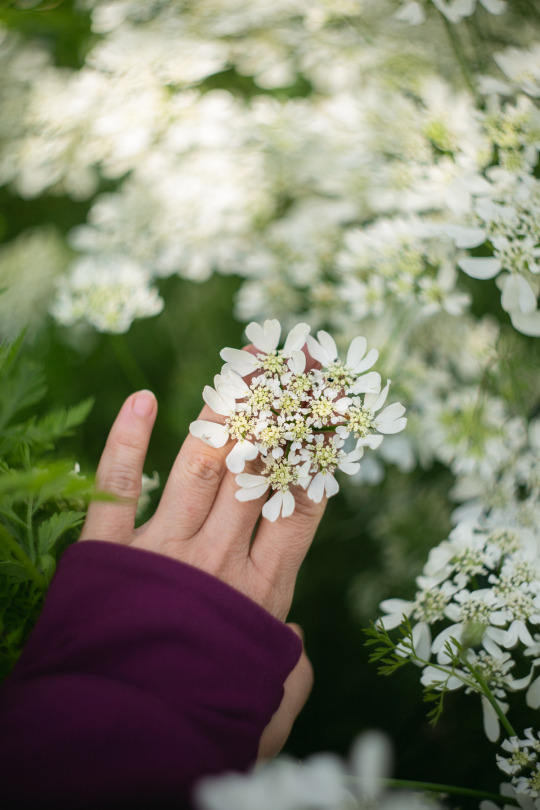
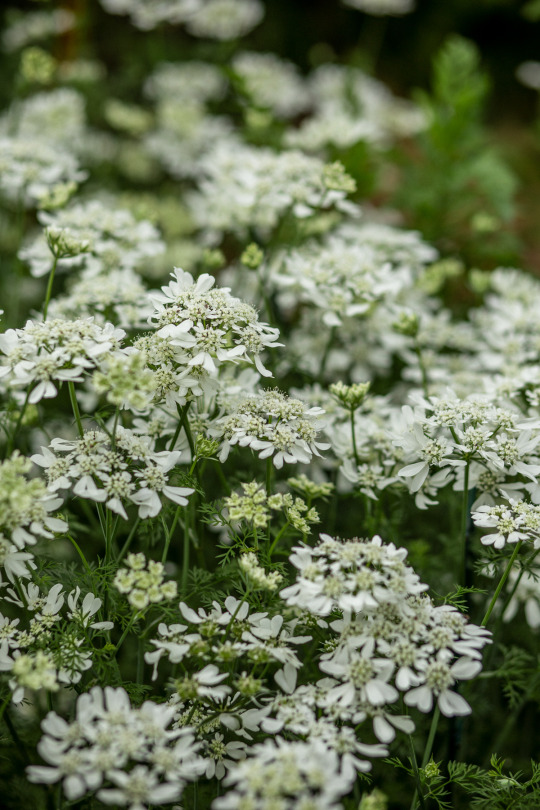

Na slici iznad je prolećni buketić satkan od čipkaste orlaye, belog kukolja, cvetova vlašca, perunike i cerinthe-a..
Ukrasna šargarepa Dara na scenu stiže malo kasnije. Prozračni čipkasti cvetovi čija boja varira od bledo roze, bordo pa do čokoladne su omiljeno mesto za okupljanje insekata,a vašem vrtu će dati livadski šmek. Dara mi se pokazala dobra i za jesenju, i za prolećnu setvu. Ukoliko je posejete krajem avgusta-početkom septembra do zime obrazuje bujnu lisnu masu, a krajem maja-početkom juna naredne godine kreće da cveta, sve do avgusta u mojoj bašti. Cvetanje možete produžiti ukoliko je posejete u par navrata i na proleće. Seme treba prekriti tankim slojem zemlje, a potrebno mu je 10-20 dana da nikne. Kao i kod orlaye godi joj fluktuacija temperature. Biljke mogu porasti 1m u visinu, kod mene su bile i višlje, a presadite ih na razmak od 20cm. Toleriše sušu, voli sunce i propusno zemljište.




Jednostavna i ne zahtevna biljka čiji cvetovi podsećaju na jastučiće za igle. Neumorno cveta već od juna i privlači mnoštvo leptira i pčela, otuda i domaće ime leptirov cvet. Scabiose su mi definitivno bolje nicale sa jesenjom setvom nego na proleće. Njima je potreban topliji period nego što su to prolećne temperature (ukoliko ih sadite ranije u proleće). A dokaz su mlade biljčice koje su već sada same krenule. I one su za zonu 7, ali su prošle godine prezimele ok. Videla su se na listovima oštećenja koja na kraju nisu bila značajna jer su se biljke bukvalno vinule u nebesa i predivno cvetale. Seme je potrebno prekriti zemljom, a niče za 7-10 dana (meni su upravo nikle nakon samo 5 dana!) Biljke rastu dosta visoko te im je potrebna neka vrsta potpore.

Ne mogu da ne spomenem Cerinthe, ljubičasti cvetovi nanizani poput zvončića su glavna atrakcija pčelama, a ima i neobićne plavkaste listove, nekad sa izraženim belim pegicama. Cveta već početkom aprila ako ga posejete na jesen (prve cvetove sam zabeležila 10.aprila), a cvetanje možete produžiti sve do avgusta ukoliko ga sejete u više navrata od proleća. Seme se preporučije natopiti u mlakoj vodi na par sati do 24 sata pre sejanja, prekriti zemljom. Ukoliko na zimu bude duži niz dana sa mrazom potrebno ga je malo zaštititi. Ja ga nisam štitila, i videla su se oštećenja na listovima ali to nije bio problem biljci da nastavi da raste. U mojoj bašti se već samorasejao.
Ostavljam vam dalje spisak jednogodišnjih cvetnica koje možete sejati uskoro, pred kraj avgusta, idealno 8 nedelja pre prvog mraza. Samo da napomenem, prvo sejem u posudice pa ih kasnije prebacujem u baštu.
Jednogodišnje: ažurirano 6. septembra 2024
Kela (Ammi visnaga) zimootporno do -12°C
Divlji komorač (Ammi majus) zimootporno do -12°C
Kukolj (Agrostemma githago) zimootporno do -17°C
Različak (Centaurea cyanus) zimootporno do -18°C
Irski zvončići (Moluccella laevis) zimootporno do -12°C
Zvinčac (Bupleurum griffithi) zimootporno do -23°C
Boraž, boražina, boreč (Borago officinalis)
Neven (Calendula officinalis) zimootporno do -12°C
Kalifornijski mak (Escholzia californica) zimootporno do -18°C
Velika visika (Cerinthe major) zimootporno do -12°C
Noćna viola (Hesperis matronalis) zimootporno do -20°
Ukrasna šargarepa (Daucus carota) zimootporno do -12°C
Digitalis (Digitalis purpurea) *dvogodišnja, zimootporno do -23°C
Žavornjak (Consolida ajacis) zimootporno do -18°C
Mačkov brk (Nigella damascena) zimootporno do -18°C
Stidak (Orlaya grandiflora) zimootporno do -20°C
Skabiosa (Scabiosa atropurpurea) zimootporno do -12°C
Zevalica (Antirrhinum majus) zimootporno do -18°C
Rudbekija (Rudbeckia hirta, Rudbeckia triloba) zimootporno do -29°C
Tanacetum (Tanacetum parthenium) zimootporno do -23°C
Slamno cvece (Xerochrysum bracteatum) zimootporno do -23°C
Zevalica (Antirrhinum majus) zimootporno do -18°C
Turski karanfil (Dianthus barbatus)*dvogodišnja zimootporno do -23°C
Mak (papaver nudicale, Papaver somniferum) zimootporno do -18°C
Mirisni grašak (Lathyrus odoratus) zimootporno do -12°C
Šeboj (Cheiranthus cheiri) zimootporno do -17°C
Koreopsis (Coreopsis tinctoria) zimootporno do -17°C
0 notes
Photo

April seeds: Orlaya grandiflora, Lappola bianca, laceflower. #seeds #whiteflowers #italy #orlayagrandiflora #caucalisgrandiflora #annuals #apiaceae #gardens #gardening #readingretreatsinruralitaly #lamacchinafissa (presso La Macchina Fissa) https://www.instagram.com/p/BwFol0pBxfB/?utm_source=ig_tumblr_share&igshid=17v7cf6yfra02
#seeds#whiteflowers#italy#orlayagrandiflora#caucalisgrandiflora#annuals#apiaceae#gardens#gardening#readingretreatsinruralitaly#lamacchinafissa
0 notes
Text
White Lace Flower Info – Learn How To Grow White Lace Flower Plants
White Lace Flower Info – Learn How To Grow White Lace Flower Plants
[ad_1]
Airy and delicate, the white lace flower (Orlaya grandiflora) delivers on the Promise of his common name. Their flowers look very similar tip cap hydrangeabut also stay white in the darkest soil. What is white lace flower? It's an easy-to-draw yearbook that's attractive Next to a backyard. Learn more about white lace flowers, including tips Continue reading on how to grow white lace…
View On WordPress
0 notes
Text
اورلايا كبيرة الازهار
المصدر: نبات اورلايا كبيرة الازهار Orlaya grandiflora – النبات سميت إلى أسماء شخصيات – النبات – معلومان عامه – معلوماتية
View On WordPress
0 notes



